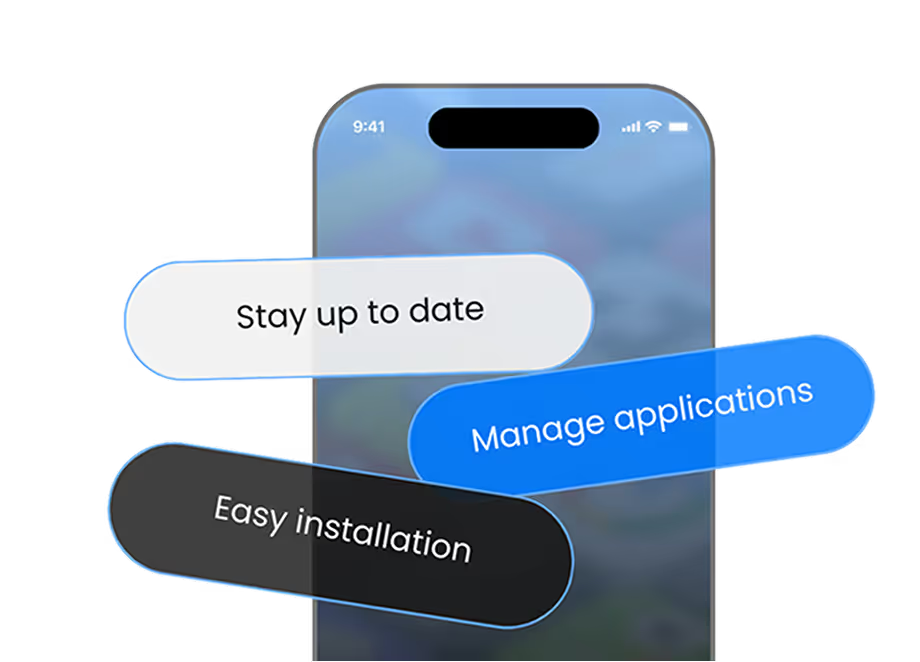.png)
Distributing a mobile app seems simple on the surface: build it, share it, and let users install it. But for developers, QA teams, and product managers, the reality is far more complex. Between device compatibility issues, broken links, outdated builds, and communication gaps with testers, traditional distribution often slows teams down right when they need speed and accuracy the most.
This is where Over-the-Air (OTA) app distribution changes the game. It eliminates the friction of outdated manual workflows and gives teams the flexibility to share, test, and deliver builds in real-time, without relying on app stores. But before we understand how OTA simplifies this process, it’s important to recognize the most common mistakes teams make in app distribution.
Mistake 1: Relying on Manual Build Sharing
Many teams still share app builds using email attachments, Google Drive, or other file-sharing tools. It might work for a few testers, but as your project scales, this method becomes a bottleneck. Files get lost in long email threads, outdated versions circulate, and it becomes impossible to know who’s testing what.
How OTA Fixes It:
OTA distribution provides a centralized and secure way to share app builds. With tools like AppsOnAir, you can upload your IPA or APK once and instantly share a short installation link with your testers or clients. There’s no confusion, no re-uploading, and no manual version tracking, just one live build accessible by everyone who needs it.
Mistake 2: Limited Device Coverage During Testing
Developers often test on their personal devices or a small selection of phones, assuming that if it works there, it’ll work everywhere. Unfortunately, performance can vary across devices, operating systems, and screen sizes, especially on Android. This leads to missed bugs and unstable releases that only appear in production.
How OTA Fixes It:
With OTA distribution, it’s easy to push builds to a wide network of testers and ensure broader device coverage. Teams can include internal testers, clients, and even external QA partners without worrying about compatibility or installation restrictions. This way, issues are caught early, before they reach the app store or your customers.
Mistake 3: Ignoring Feedback Loops
Even when builds reach testers, collecting meaningful feedback is often chaotic. Screenshots are shared over chat, bug descriptions lack context, and developers waste hours trying to reproduce issues.
How OTA Fixes It:
When OTA distribution is paired with in-app feedback tools like AppRemark, testers can report issues directly from the app, complete with screenshots, annotations, and detailed descriptions. This creates a direct, contextual feedback loop between testers and developers. Bugs are reported faster, resolved sooner, and QA cycles shorten significantly.
Mistake 4: Slow Iteration Due to Store Dependency
Traditional workflows require pushing every update through app store submission and review cycles, even for internal testing or hotfixes. This means delays in testing and lost productivity during development.
How OTA Fixes It:
OTA distribution lets you bypass the app store entirely for pre-release or internal builds. Teams can deploy updates instantly, share, install, and test in real time without waiting days for approvals. With AppsOnAir, your testers can receive push notifications the moment a new build is uploaded, ensuring everyone stays on the latest version.
Mistake 5: Security Risks in File Sharing
Sharing app builds via public links or cloud folders exposes your apps to security vulnerabilities. Anyone with access to the link can download your build, putting proprietary code or pre-release features at risk.
How OTA Fixes It:
OTA platforms prioritize security. AppsOnAir lets you distribute apps privately, using password protection, access restrictions, and expiring links. You can control exactly who can download and install your builds, keeping sensitive data and unreleased versions safe.
Mistake 6: Poor Version Management
Without proper version tracking, teams risk confusion over which build is the latest. Testers may unknowingly install old versions, making feedback inconsistent or irrelevant.
How OTA Fixes It:
OTA systems maintain clear version history and metadata for every build. With AppsOnAir, each version is logged, labeled, and accessible through a unified dashboard, making it easy to monitor builds, track updates, and roll back if needed.
Mistake 7: Neglecting User Experience for Testers
If your testers have to jump through hoops to install your app, they’re less likely to engage. Complex installation steps, revoked certificates, or missing permissions often discourage participation.
How OTA Fixes It:
With OTA distribution, installation is effortless. Testers simply open a secure link in their mobile browser and tap to install, no cables, no manual setup, and no need for developer provisioning. This frictionless process improves tester engagement and feedback quality.
How AppsOnAir Makes OTA Distribution Seamless
AppsOnAir takes OTA distribution beyond the basics. It allows you to:
- Upload builds up to 300MB - much higher than other tools
- Share unified install pages for both Android and iOS
- Get real-time download stats and tester feedback
- Manage multiple projects and teams from one dashboard
- Notify testers automatically when new builds are available
With features like AppRemark for feedback and CodePush for live updates, AppsOnAir provides everything modern mobile teams need to distribute, test, and iterate faster.
Conclusion
App distribution doesn’t have to be a slow, error-prone process. The traditional ways of sending builds, collecting feedback, and managing versions create more friction than progress.
With OTA distribution through AppsOnAir, teams move faster, testers stay more engaged, and feedback turns into action, all without the bottlenecks of app store delays or manual processes.
In 2025 and beyond, real agility in mobile development starts with seamless distribution. And OTA is the bridge that gets you there.












